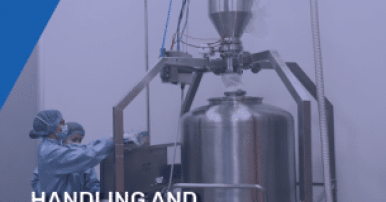Feeling absolutely baffled by the number of specialty vacuum systems on the market? We get it—and we’re here to help. Frequency of use is one of the many key elements you’ll need to take into consideration before purchasing a quality industrial vacuum system.
How often do you plan to cycle your new vacuum on and off? Will you constantly be flipping the switch, or will it be left in the “on” position for an entire 8-hour shift? Let’s talk about why usage matters so much, the differences between continuous-duty and intermittent-duty industrial vacuums, and how to go about choosing a system that will work for your needs.
Understanding the Duty Cycle
You shouldn’t start shopping for a specialty vacuum until you have a rough idea of how often and for how long you’ll be operating it—in other words, you need to have a solid understanding of the probable duty cycle. These critical ranges of use will help you determine the right type of motor for your system. And from there, you can think about cost. If you’re constantly running a vacuum that isn’t designed for continuous use, for example, you’ll be replacing multiple motors every month. Suddenly, you’re looking at $10,000 and whatever losses you incur during downtime.
You should always ask yourself what your total cost to own a vacuum system is. What will it cost to purchase, maintain, service, and run that system? This is your total cost of ownership (TCO). Ideally, you’ll find an industrial vacuum system that meets your needs with the lowest possible TCO.
What Is a Continuous-Duty Vacuum?
Let’s touch on continuous-use vacuums first. A continuous-duty vacuum is meant to be operated for long periods. One common setup is to have it constantly extracting something from the production line. That could be scrap parts, waste, or dust. These vacuum systems are also used to address general cleaning needs. You might have a central vacuum system with piping that allows multiple people to just insert a hose into the piping system and clean an area, as opposed to switching a system on and off.
Continuous-duty blowers are the highest performing and most efficient motors on the market. They start at about 2.5 HP and go up to about 40 HP. Note that you can use continuous-duty vacuums intermittently. Maybe you’re interested in a continuous motor for its excellent performance, but you need to cycle the machine on and off. You can do that—just be aware that this may reduce the lifespan of the motor, and the bearing will wear out more quickly.
What Is an Intermittent-Duty Vacuum?
An intermittent-duty vacuum is used for shorter periods, really anything under an 8-hour shift. This makes it ideal for a quick clean or cycling on and off frequently. Motors used in intermittent-duty systems can be turned on and off for hours at a time.
The lifespan of intermittent-duty vacuums is significantly shorter when compared to continuous-duty units. Intermittent-use vacuums are designed with more wearable parts, so you would never want to operate one continuously—at that point, you would just be wasting money!
Let’s say you know you’ll need to turn your industrial vacuum on and off about 10 times in a single hour. That’s 80 cycles over the course of an 8-hour shift. In that situation, your TCO for an intermittent-duty vacuum will be much lower than your TCO for a continuous-duty system.
Types of Motors
With the differences between continuous and intermittent-duty vacuums in mind, we can now turn to the many types of motors on the market. Here’s a breakdown of the most common motors you’ll see in vacuums.
Carbon Brush Throughflow
Designed for use in intermittent-duty vacuum systems, carbon brush throughflow motors are the most affordable type of motor you’ll find. They’re also the least effective. The air path of the blower assembly goes directly through the motor, which means that the vacuum itself keeps the motor cool. This also means that if a filter is damaged or removed, the product you’re picking up will be directed right through the motor—which will likely cause it to fail. Once that happens, or the inner metal coil wears down, you’ll lose suction, and it’ll be time for a replacement motor.
Carbon brush throughflow motors are intended exclusively for intermittent use. If you were to run this type of motor continuously, you would only get about a month of work out of it! That will only drive your TCO up, which is why it’s so crucial to choose a motor that meets your usage needs.
Carbon Brush Bypass
Carbon brush bypass motors are more expensive than a carbon brush throughflow, but they’re an affordable option for an industrial vacuum system. They’re also intended for intermittent use, as their parts tend to wear down over time. Designed with two airpaths, a carbon brush bypass operates with air entering in two different spots and exiting through one exhaust. This mitigates the risk of product being directed through the motor and ruining the system.
These motors have an approximate lifespan of 900 hours. When the brushes wear out, you can replace them—but you’ll also have to pay for that maintenance and repair time. Factor in the labor, cost of parts, and the fact that you’ll likely only get about another 300 hours out of the blower, and oftentimes it’s just cheaper to replace the entire motor.
Brushless
Now for a hybrid option. Brushless motors are somewhat of a newer addition to the vacuum industry, but more and more companies are adopting them. Why? These motors bridge the price and performance gap between carbon brush bypass and regenerative blowers.
This motor is very efficient in terms of power consumption versus performance, and it can be used intermittently or continuously. You could conceivably get about 10,000 hours of work from it before it burns out. You might consider a brushless motor if you have varied cleaning needs or could see your facility requiring an industrial vacuum that can handle both continuous and intermittent use moving forward.
Regenerative (Side Channel)
Regenerative systems provide excellent pressure and airflow for mid-range vacuum applications. Maintenance is minimal—these will run for around 30,000 hours with a bearing replacement at 20,000 hours. If you ran a regenerative blower every day, that’s over 2.25 years with just one bearing change! So, while you might initially balk at the up-front price, your TCO will go down if you’re running this type of motor for a long time when compared to other motors.
Positive Displacement (PD)
Positive displacement pumps are meant for intensive applications. Think picking up high bulk density products like rocks, cement, or steel, or moving those products over long distances. PD pumps create an extremely high pressure (up to 280 inches of water lift!), but they are maintenance intensive and can be quite loud.
Fortunately, industrial vacuum technology is always advancing. There are now regen blowers that can compete with PD pumps, offering a similar level of pressure and performance while retaining that much lower level of maintenance.
Types of Power Units
Each of those motors will have different power requirements, so you’ll need to find out what type of power your facility supports. For an in-depth look at the importance of power and a comparison of single and three-phase, check out our walkthrough.
Single-Phase
The United States uses 115V single phase, meaning that the average household outlet provides about 3 HP. This can limit performance in some cases, but you’ll find this type of power appropriate for intermittent-use vacuums. Carbon brush throughflow, carbon brush bypass, and brushless motors all use single-phase power. Single-phase industrial vacuums are, overall, able to collect some liquids and dust efficiently when used for short periods.
Three-Phase
You’ve probably already guessed it, but regenerative blowers and positive displacement pumps both use three-phase (230V and 460V) power. Just think about the amount of work, performance, and usage you get from these machines! It stands to reason that they would have a higher amp draw. Three-phase industrial vacuums are ideal for continuous use and heavy-duty applications.
Compressed Air
If electricity is an issue in your facility, you may want to look into pneumatic vacuums. These high-performance, high-pressure systems come at a lower initial cost, although they are fairly expensive to run. With suction created by a Venturi system and zero moving parts, the components of compressed air vacuums typically don’t wear out. This type of system may also be appropriate for use in potentially hazardous environments.
Choosing Between Intermittent and Continuous Vacuum Systems
Now that you’re more familiar with the various motor options available to you, it’s time to narrow down your choices. If your needs are straightforward, you may have an easy time choosing between continuous and intermittent-use systems. But things aren’t always black and white.
If you’re struggling with defining your needs, take a step back and make sure you can answer the following questions:
- How often will you be using your industrial vacuum?
- For how long will you be operating your system?
- What kind of power are you working with?
- What’s your budget?
Above all, keep your TCO in mind. This number (or range) will allow you to set expectations and determine things such as whether one system with a lower initial cost could end up being less affordable than a more expensive system over time. For example, if you need a three-phase industrial vacuum for continuous use, but your facility isn’t equipped with three-phase power, you’ll either need to bring in that power (probably a pricey endeavor) or opt for some combination of single-phase systems that can accomplish your goals.




